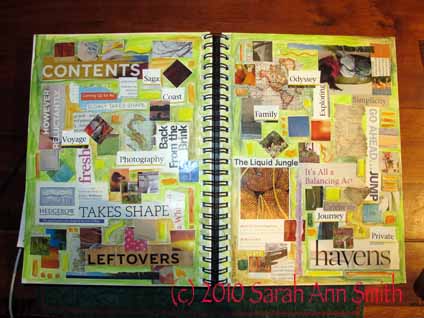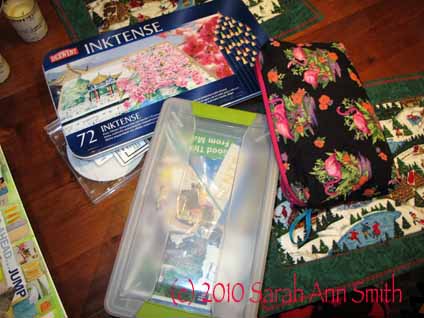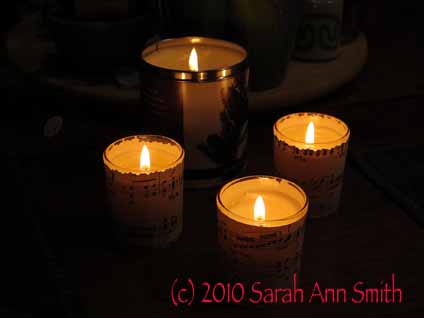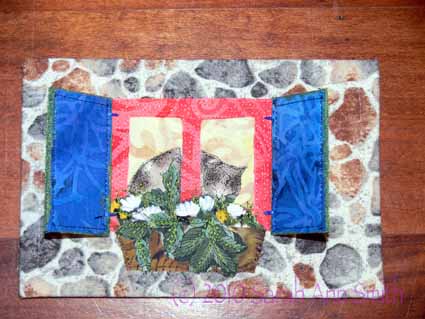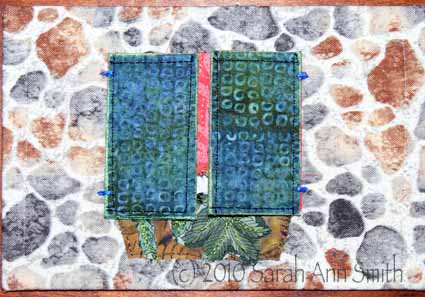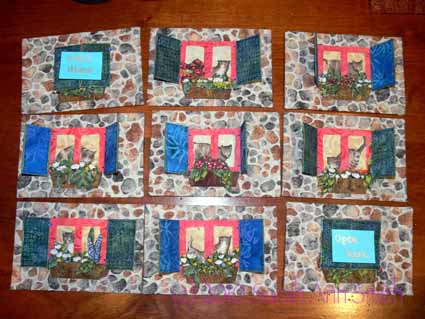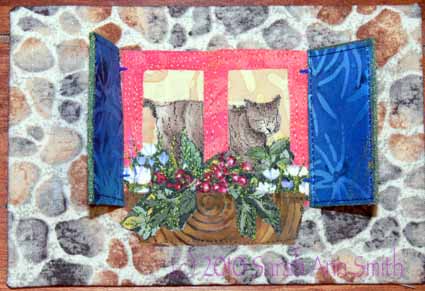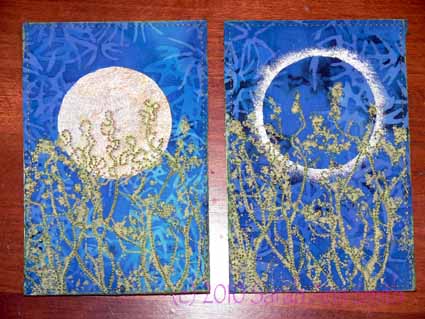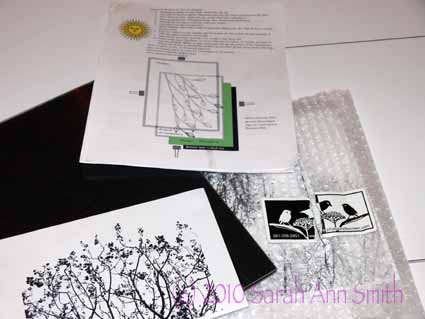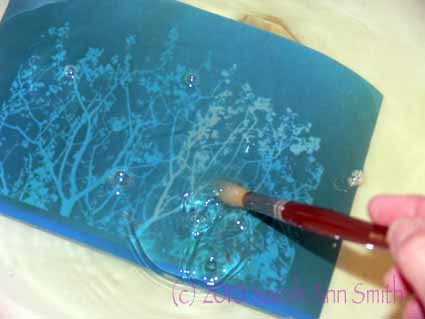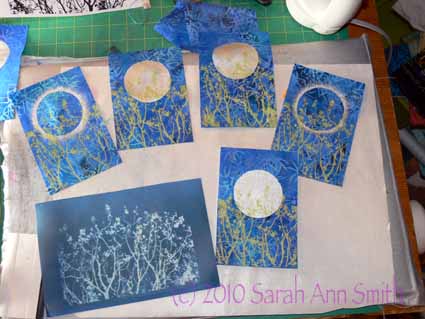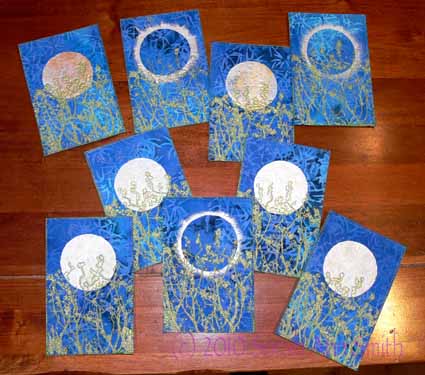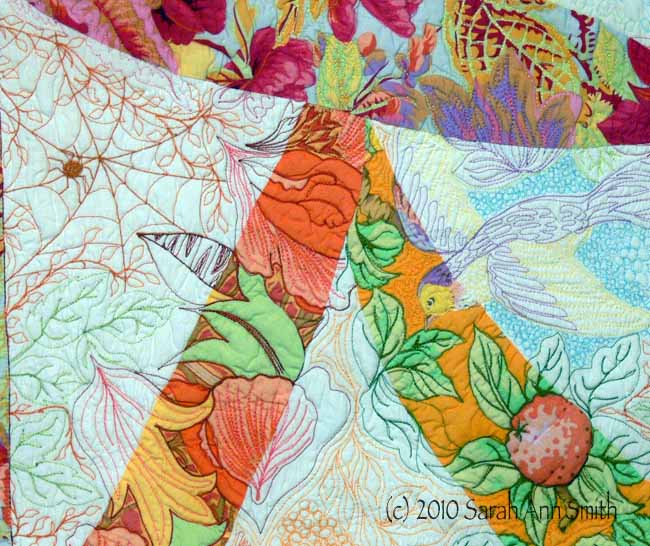
detail from the most recent free motion sampler--should be clickable for a larger view in most browsers
In my previous post, I shared The Ginormous Quilt (I may have to actually NAME it that!) inspired by Jenny Bowker’s quilt sampler and my variation on her theme. I was able to see Jenny at Quilt Festival in Houston, have supper with her and Aussie friend Lisa Walton (of the gorgeous hand-dyed fabrics, here), and Jenny invited me up to her class one morning before the class began to see her other samples. I thought I should try a few variations on the theme myself but, unlike Jenny’s samples in Houston, introduce some curves into the process. Here’s my original variation on Jenny’s idea:
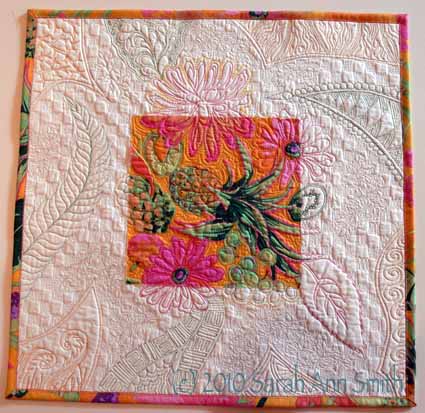
And here is the most recent one–and yes, *I* actually *pieced* that! What’s become of me?
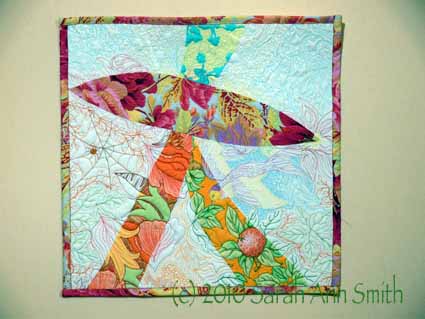
Free-motion sampler, before washing
Since I have the Ginormous thing, I wanted to test out various battings before spending a bundle to have it basted on a longarm. The good news is that wool batting does not alter the whiteness of the sashing enough to be noticed, so if I want to I can use a wool or wool-blend batting. In this sample, I used Hobbs Heirloom Wool, which is quite puffy. To use a Pamela Allen (if you’re not familiar with her work, click on her name to visit her website and prepare to spend a good long while being inspired!) word, I like the “puffosity” of it. The bad news is that you need to baste MORE with wool batting than with cotton or you get some slippage and bubbling. Ahem. Basting is NOT my strong suit!
Since the Ginormous Quilt is to be a used bed quilt, with cats sleeping on top of it and getting it seriously hairy, I need something that will wash up nicely and easily without fuss. So I tossed the sample into the washer and dryer with the regular washing. As you might gather, I’m not a fusspot about some things. This is what it looked like straight out of the dryer….gulp!
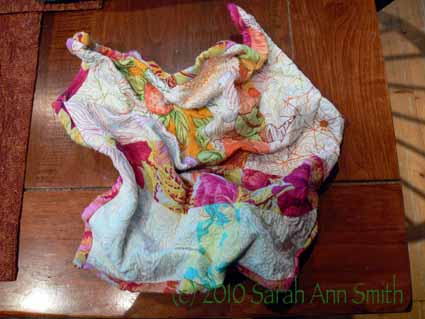
After machine washing and drying, wool batting (shrinkage expected!)
I took it upstairs, misted it with water and pulled it out a tad—here are back and front before ironing:
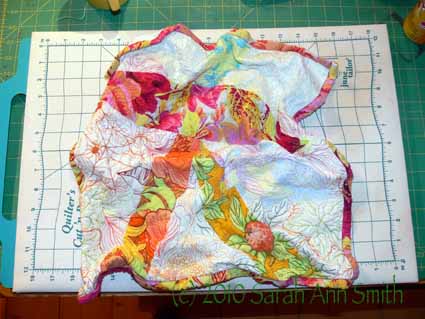
After machine wash and drying. Misted with water and pulled out a little.
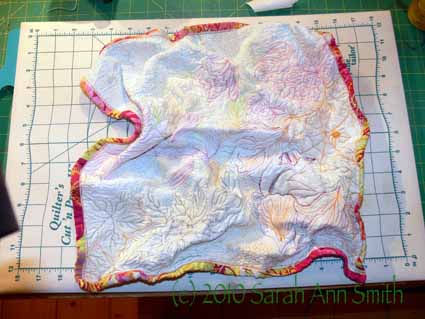
Back view, after washing, drying, and a light mist of water prior to ironing
After ironing, it is much better and an inch smaller than before washing/drying:
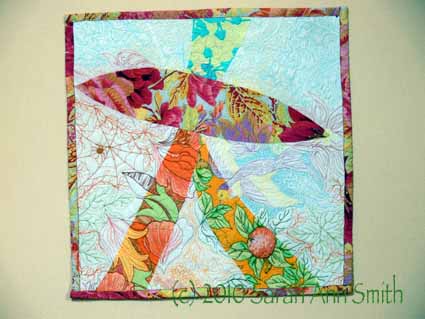
After washing, drying, misting and ironing. Notice the ripply straight grain bindings. This is why I ALWAYS make bias! This was as a sample of why I don't like straight grain....
I REALLY dislike straight grain bindings, but given how little of the fabric I had left, I decided to do a straight grain binding. This sampler is a perfect example of why: ripples. UGH. The teaching part of this section of the quilt is “why I don’t do it this way”. Ahem.
The bottom line: despite the apparently horrible crumpliness of the quilt straight out of the dryer, I think this soft, light, drapeable wool batting (Hobbs) could work. I would simply tumble dry to “damp” instead of “dry”, then let it air dry the rest of the way. Of course, there is the question of whether or not it would fit in a home dryer! My sample was just under 18 inches before quilting. It was, after squaring up after quilting, 17 inches with binding. After washing, it is 16 x 16 inches. This shrinkage was expected and planned for in constructing the top, which I made oversized so that when hubby and the cats hog the covers I will still have enough quilt left. Smile!
I have at least one other wool batting sample, by Pellon, and plan on also making a comparable size with the Quilters Dream Wool and another with their cotton batting, which is one of my favorite cottons. All samples will be machine washed and dried…I am absolutely NOT going to fussy-wash a quilt that is nine square yards huge! When I get them all done (probably in about a year…sigh…) I’ll share the final comparisons.
